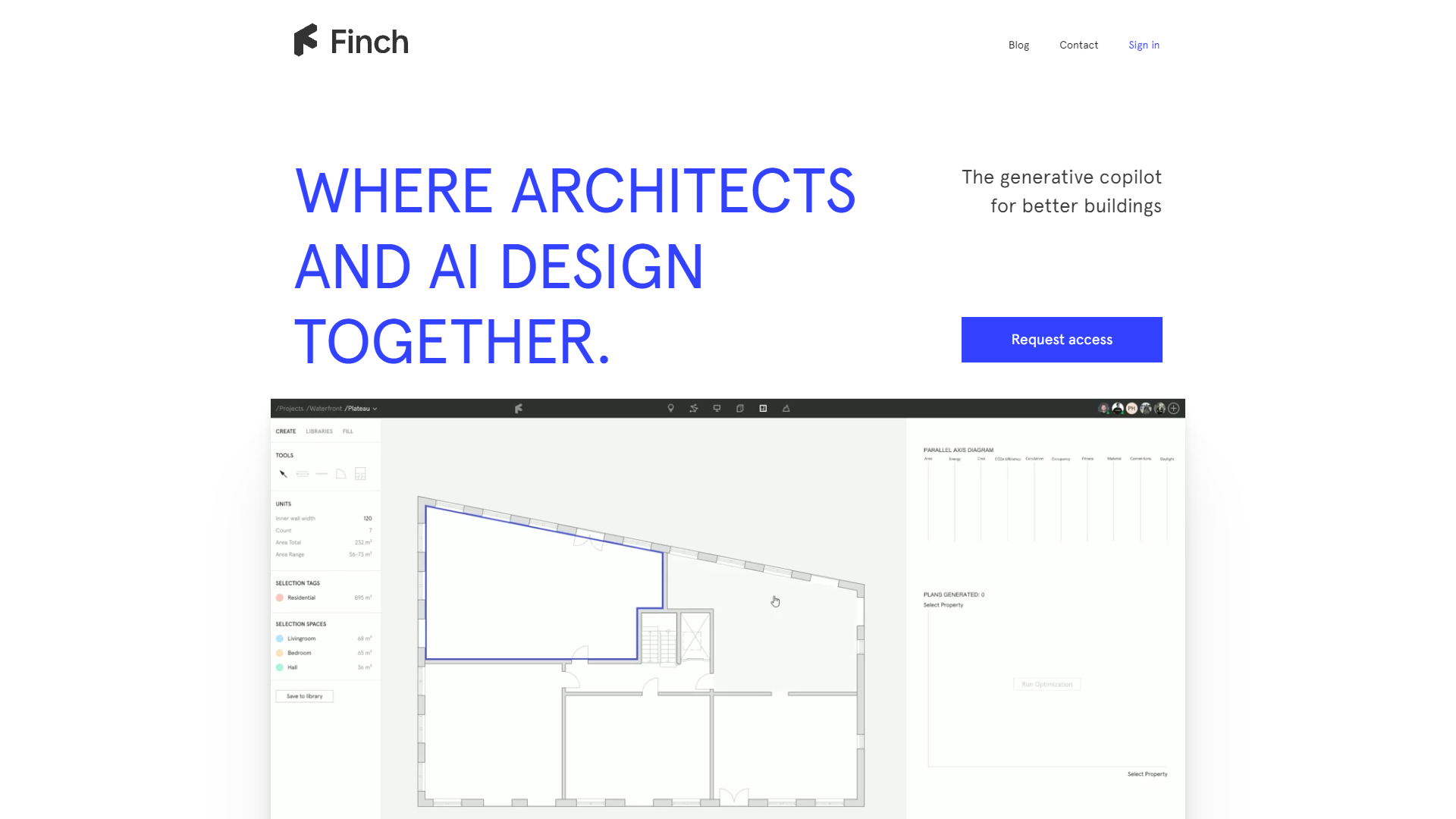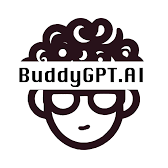Overview
Finch is a cutting-edge AI tool designed to revolutionize the architectural design process by enhancing efficiency and optimizing outcomes. This innovative platform serves as a collaborative partner for architects, employing advanced technologies such as AI, graph technology, and sophisticated algorithms to refine design precision and accelerate decision-making. Finch's standout feature, the Generative Copilot, empowers architects to produce superior buildings by enabling rapid iterations and providing instant feedback, thus facilitating faster exploration and data-backed decision-making.
The tool is adept at ensuring designs adhere to regulatory standards and integrates effortlessly with popular design software including Revit, Rhino, and Grasshopper. This seamless compatibility allows architects to enhance their existing workflows without the need for cumbersome adjustments. Finch not only simplifies the design process but also inspires architects by expanding their creative horizons.
Endorsed by professionals like Mads Kjær Ravn and Gaia Cella, Finch has proven its worth in speeding up the design phase and refining early-stage conceptualizations. With over 60,000 architects eagerly waiting to access Finch, it is clear that this tool is set to be a game-changer in the field of architecture, offering a blend of inspiration, efficiency, and innovation.
Key features
- Generative copilot: Utilizes AI to provide architects with real-time design suggestions, enhancing creativity and efficiency in the architectural process.
- Instant feedback system: Offers immediate evaluations and adjustments to designs, allowing for rapid iteration and decision-making in architectural projects.
- Advanced integration: Seamlessly connects with popular design software like Revit, Rhino, and Grasshopper, facilitating a smooth workflow for architects.
- Data-driven decisions: Empowers architects with data-backed insights, enabling informed choices and optimized design outcomes through sophisticated algorithms.
- Rule compliance checker: Automatically ensures that all designs adhere to relevant regulations and standards, reducing errors and compliance risks.
- High-speed iteration: Allows architects to quickly explore multiple design options and refine architectural plans with unprecedented speed and precision.
 Pros
Pros
- Environmental impact analysis: Provides architects with tools to assess and optimize the environmental footprint of their designs, promoting sustainable architecture practices.
- Collaborative platform: Enables multiple users to work on the same project simultaneously, enhancing teamwork and streamlining project development.
- Virtual reality integration: Allows architects to immerse themselves and their clients in virtual models, facilitating better understanding and communication of design concepts.
- Customizable templates: Offers a range of pre-designed templates that can be customized, speeding up the initial phases of design and ensuring consistency.
- Scalability features: Supports projects of varying scales, from small residential to large commercial developments, making it versatile for different architectural needs.
 Cons
Cons
- Complex interface navigation: The tool's rich feature set can lead to a complex interface, potentially overwhelming new users and slowing initial adoption.
- Over-reliance on AI: Heavy reliance on AI suggestions might stifle an architect's unique creative process, leading to less personalized design outcomes.
- Internet dependency: Requires continuous internet connectivity to access cloud-based AI features, limiting use in remote or low-connectivity areas.
- Resource intensive: Demands high computational power for running advanced algorithms, which might exclude users with less capable hardware.
- Privacy concerns: Handling sensitive project data through the system raises concerns about data privacy and security in cloud-based operations.

















